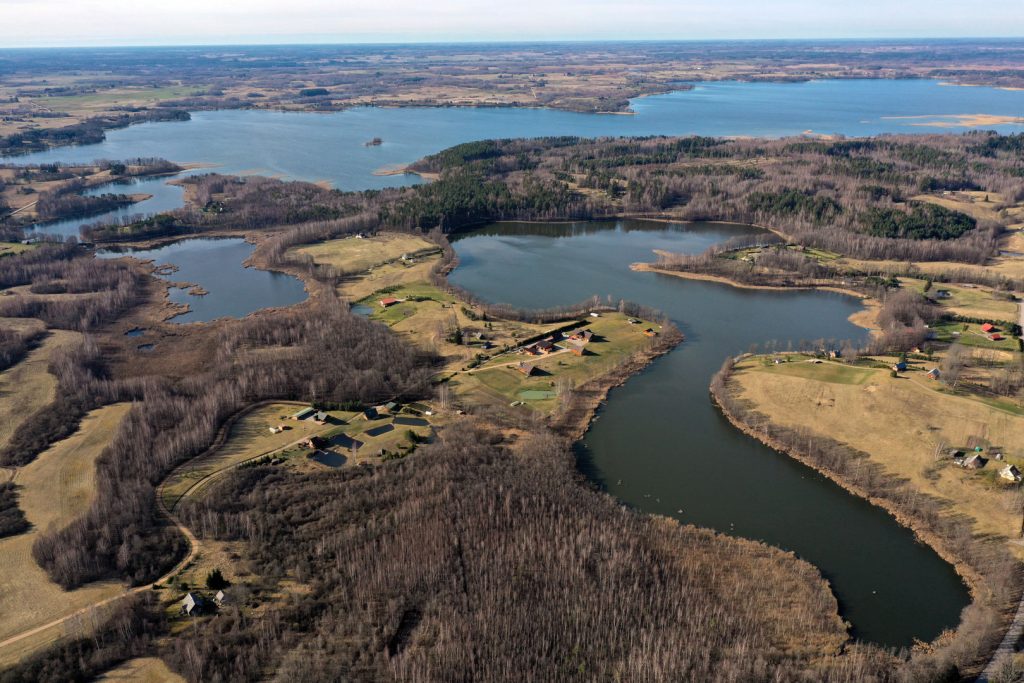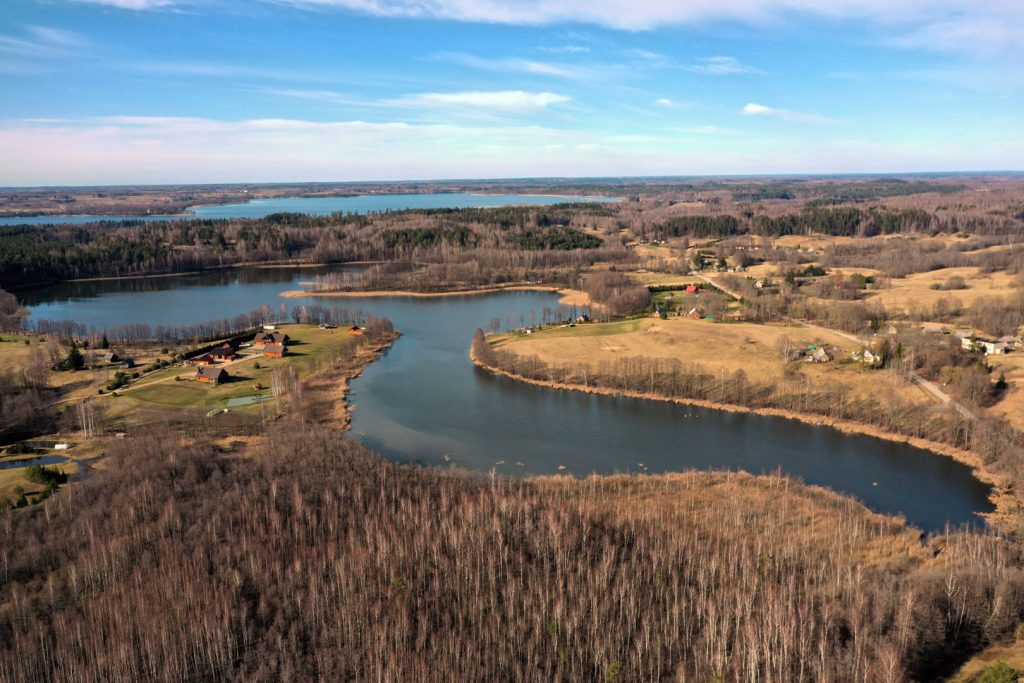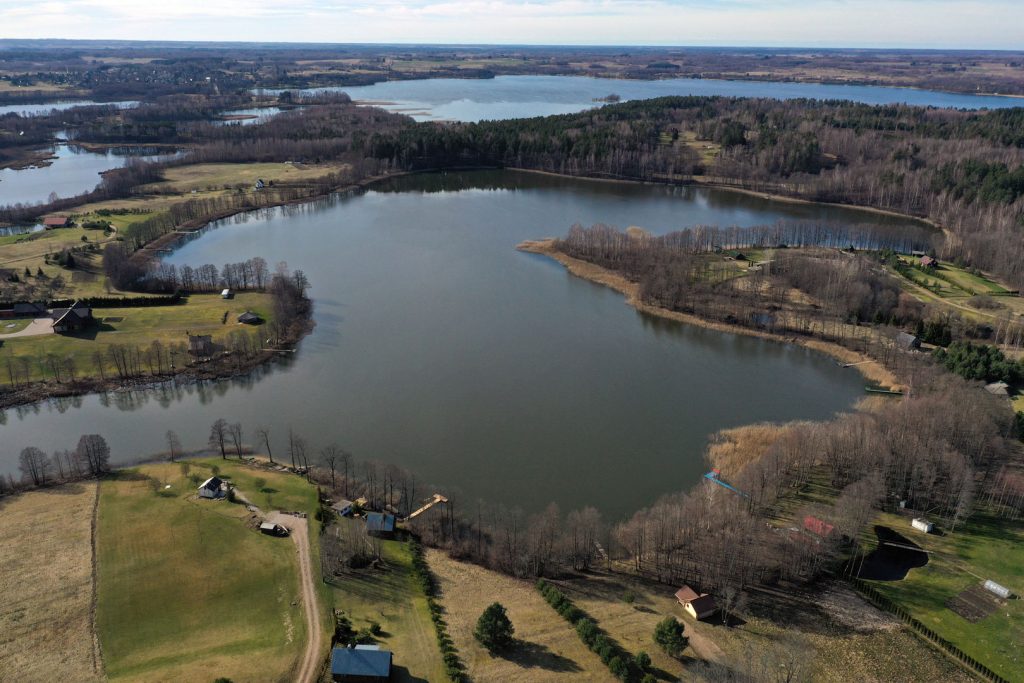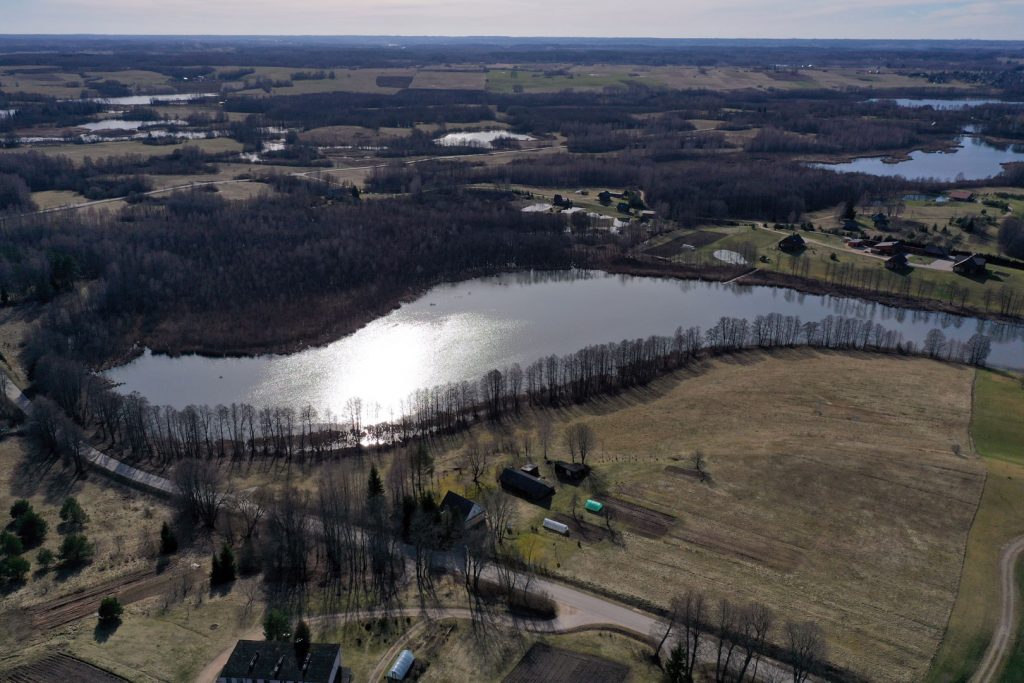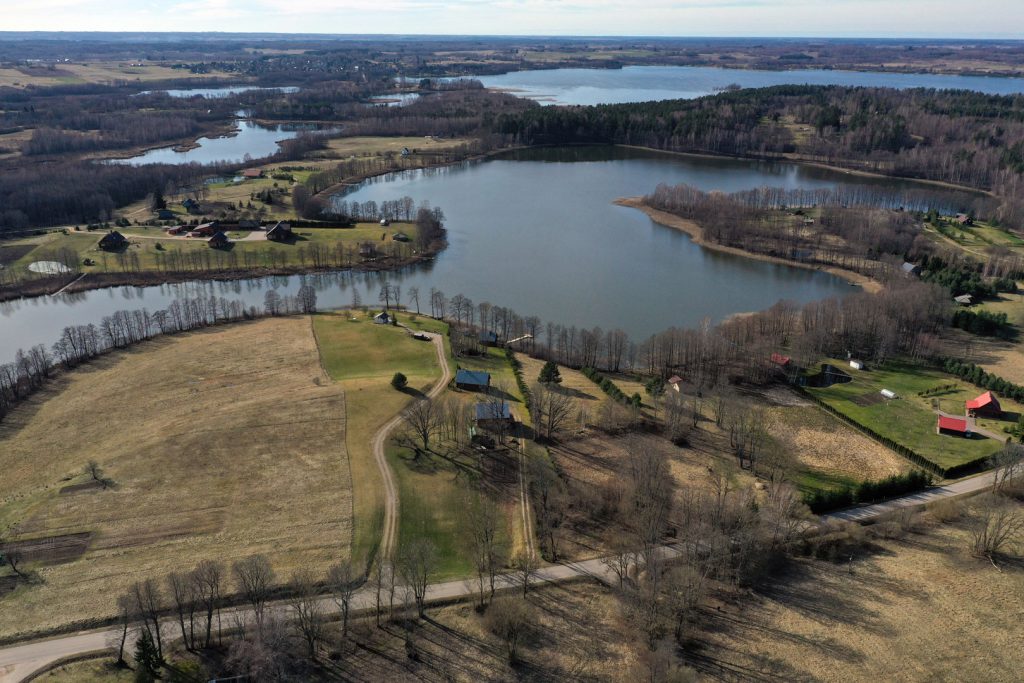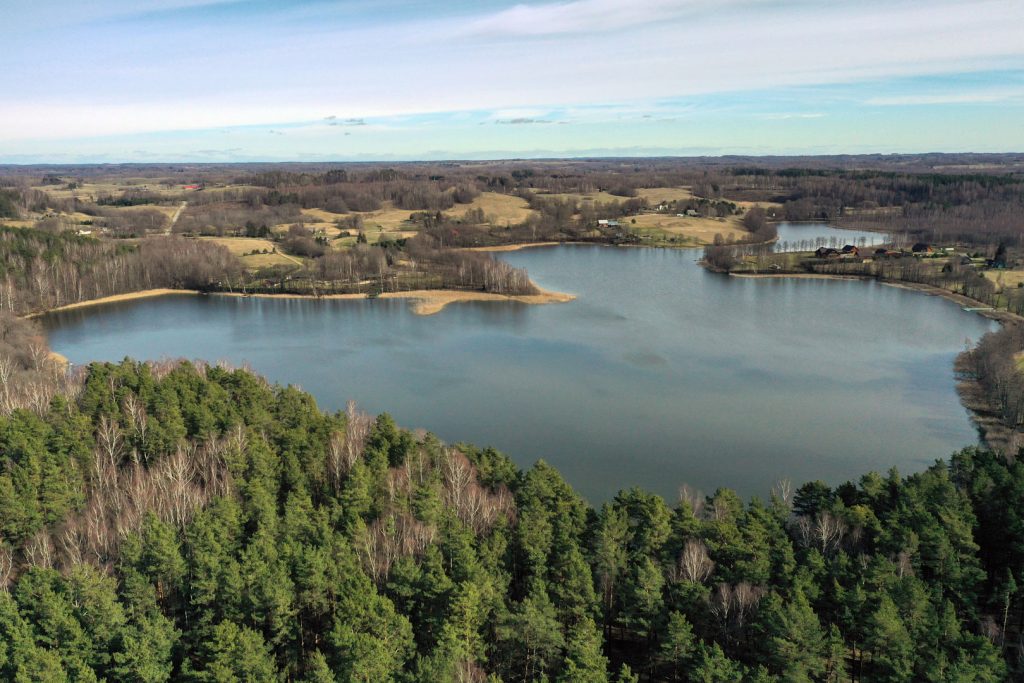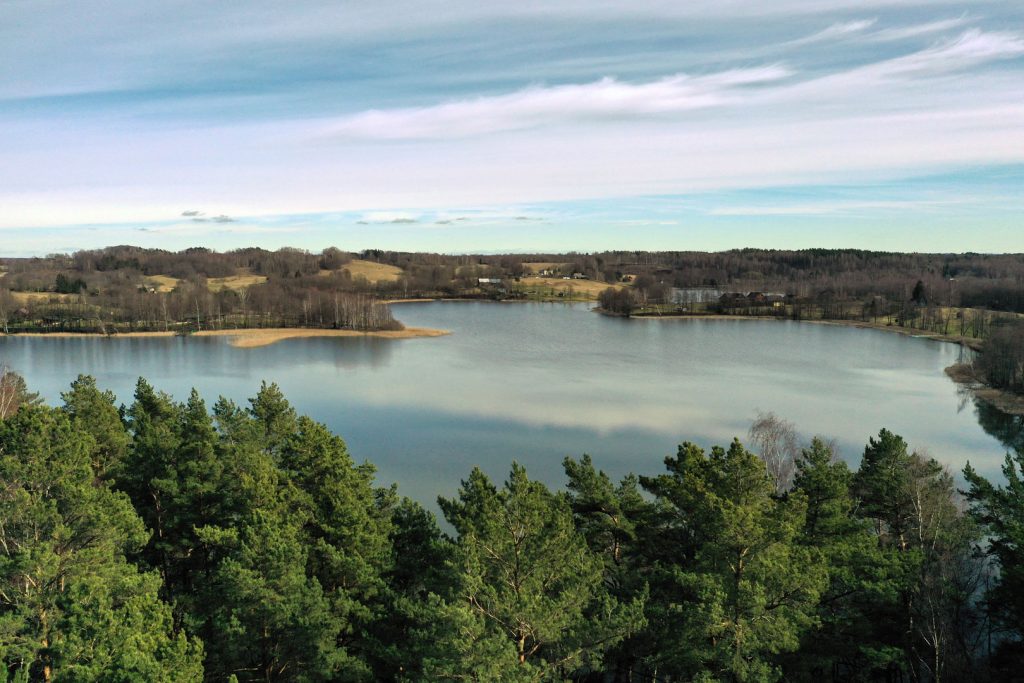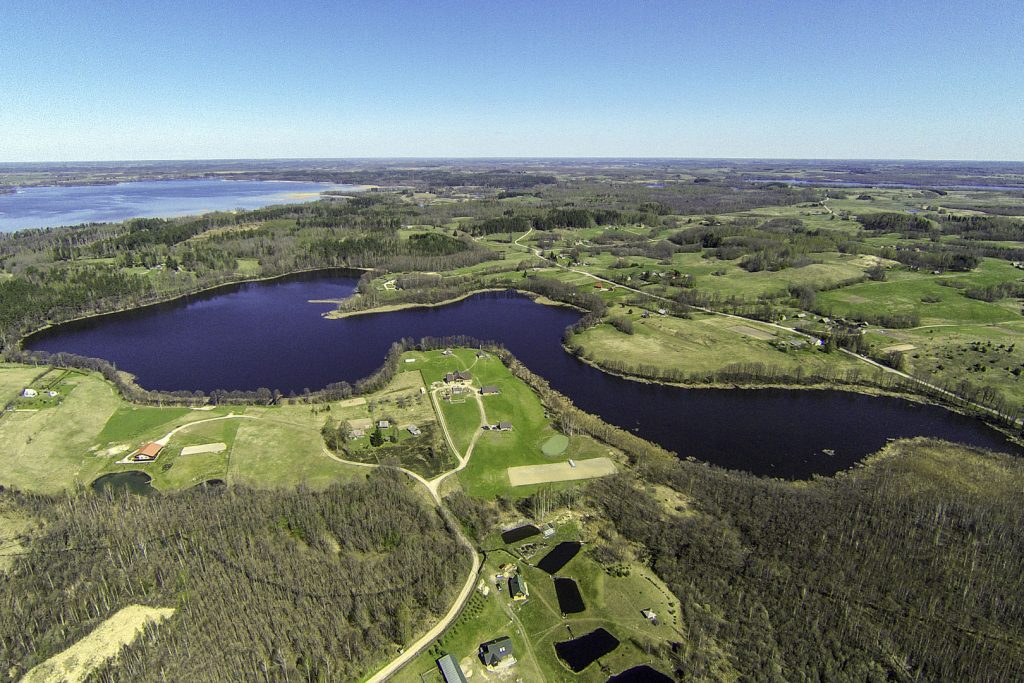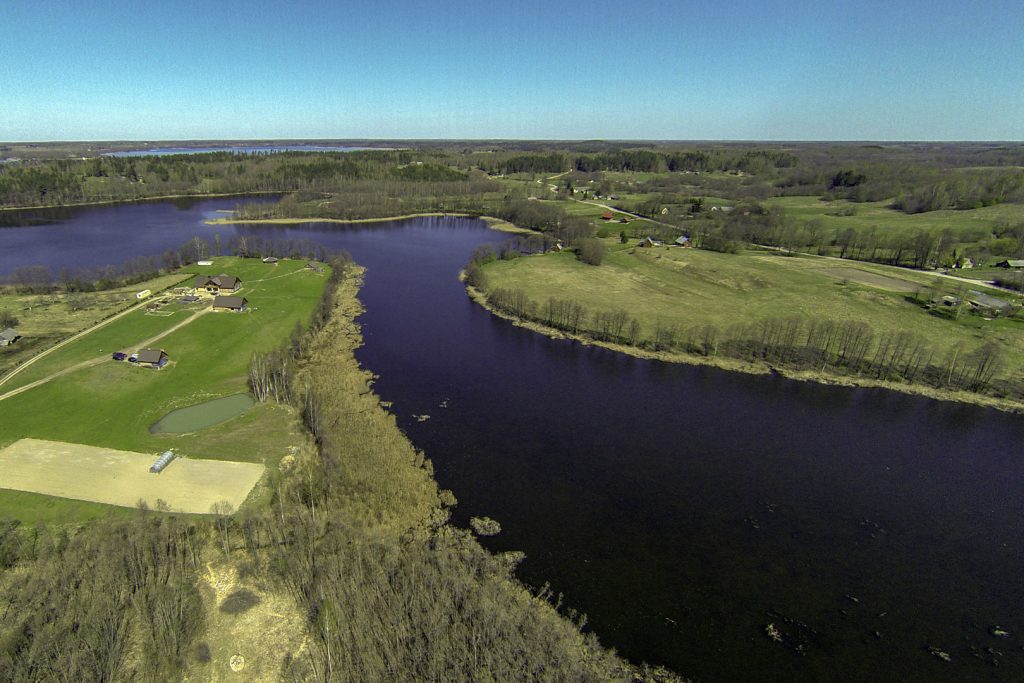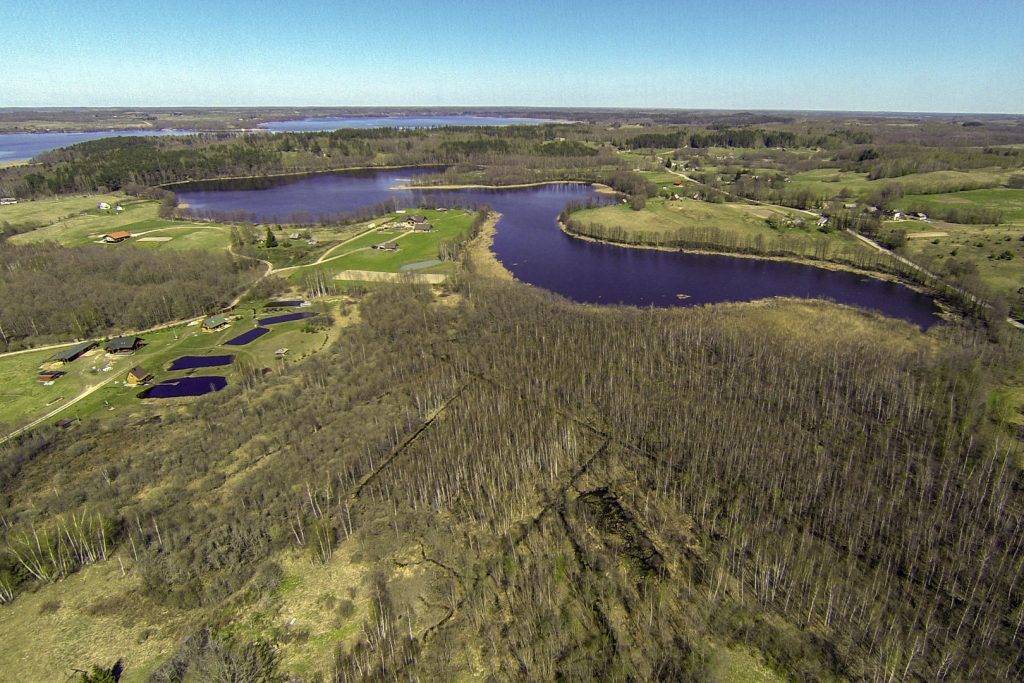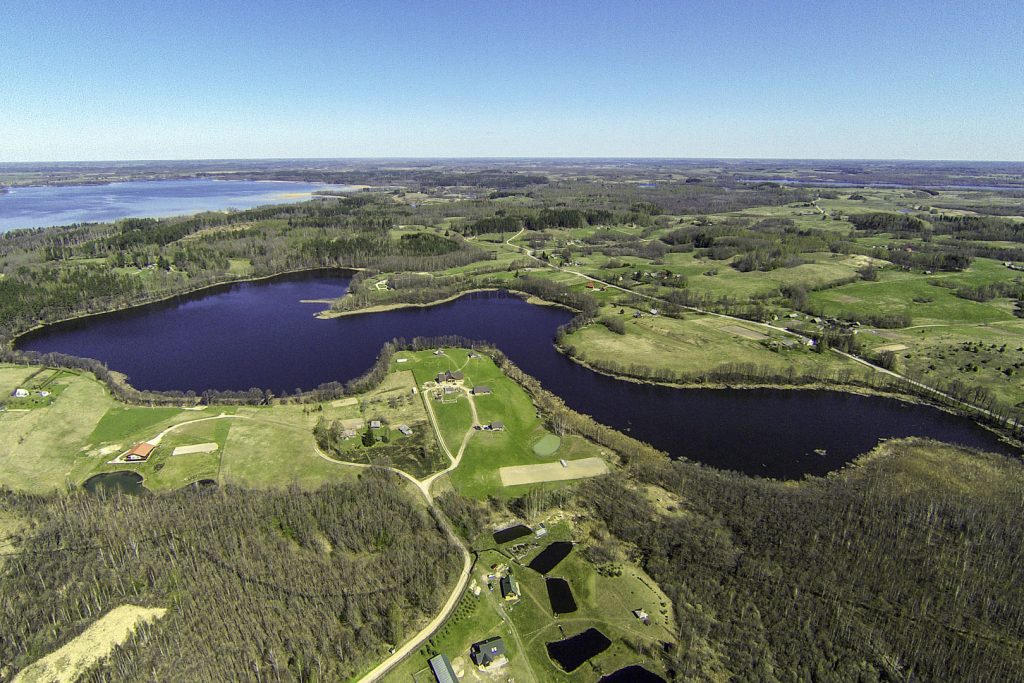Giedrys
A 32- ha lake, situated east of Alaušas lake, connected with it through a 0.5 km canal (Alaušas basin). The name comes from Lithuanian giedras which means „clean, clear, pure“. The length 1.2 km, average width 0.27 km, coastline 3.2 km. The trough of the lake was formed by an ice block, greatest depth 11m, average depth 4.1m, the volume of water 1.3 mln.m³. Nearby there are villages of Salos and Rukliai.
The coastline is winding with numerous bays. The banks in the north and east are so steep that in winter children go down them on sledges; the south bay is marshy and completely inaccessible in summer. On the northern bank it is comfortable to fish from the bank using bottom fishing rigs, but there is no road or path, so one has to carry all fishing equipment. There are about 11 footbridges around the lake. For those who enjoy passive fishing using bottom fishing rigs, footbridges are just for that. The water surplus of the spring flood flows to Lankos lake and from there to Alaušas lake, Kazokas bay. It is separated from Alaušas lake by a high ridge, about 500 m of walk. In the lake there live basses, carps, roach, pikes and breams. In summer the southern bay overgrows with plates of nuphar and water-lilies, and in such places tench, silver carps and rudds flourish. In early spring rudds in the north-east bay of Giedris bite already at the end of March. Despite the 11- meter deep hollow, the lake can be considered to be of a carp type. Unfortunately, the location of the hollow is easily detected with an echo-sounder; there carps and breams spend winter. The lake has been stocked with carps, silver carps, zander trout, eels. Since 1981nearly every year it has been stocked with pikes.
During the studies in 2013, 5 species of fish were caught: roach, bass, bream, white bream and zander trout. There are very few pikes in the depth of 5-6m in the near-shore and even though this body of water is constantly stocked with pikes, they were not caught using selective nets. It could be stated that pikes are overfished and a very small average size of breams proves that they are fished using illegal tools.
The greatest relative abundance in Giedris lake was that of roach and basses (35.9 and 25.6 % respectively), but the biggest biomass was that of breams, reaching 57 % of the total fish biomass. From the rest of fish only white breams stand out (20.5 %), but their biomass is only 2.7 %. The abundance of white breams shows that there are not enough predators. The population of fish in the near-shore is not balanced, basses which play the role of predators are rather small, even though their mass amounts to 1/3 of the total mass of fish.
The growth rates of basses are slow, of breams according to the length, average, according to the weight, slow. Giedrys, according to the state of population, is bream – zander trout lake. Pikes, tench, rudds are scarce. In the future the role of predators should be performed by pikes in the near-shore and zander trout in the depth. This would considerably decrease the numbers of white breams and small roach; and the growth of bream would improve as there would be more food left for them. The dominant species in Giedrys is the bass.
